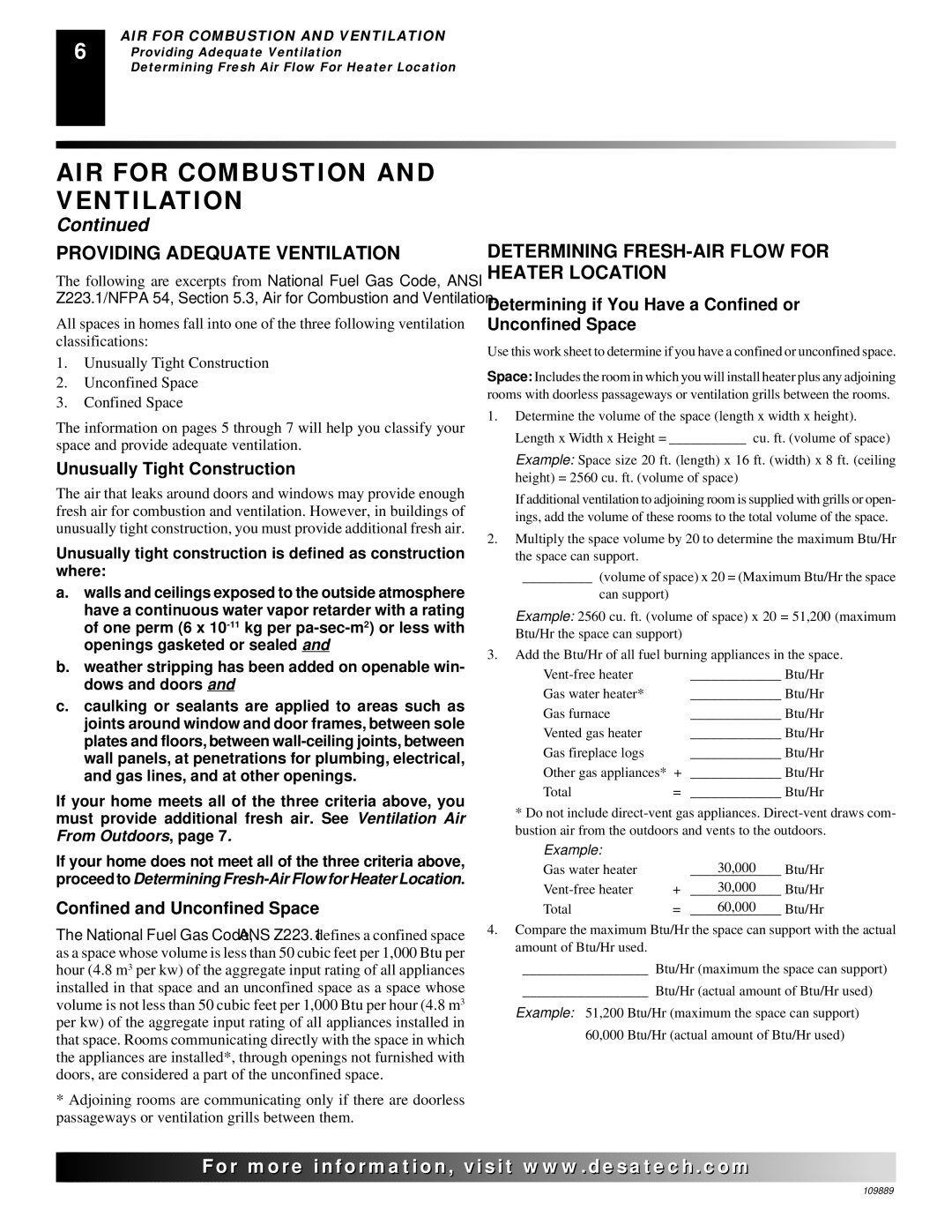VMH3000TPA specifications
The Desa VMH3000TPA is a state-of-the-art heating appliance designed to deliver efficient warmth while ensuring user comfort and convenience. This model is widely recognized for its innovative technologies, smart design, and eco-friendly features, making it an ideal choice for residential spaces.One of the standout features of the VMH3000TPA is its powerful heating capacity. With a robust output of 30,000 BTUs, it is engineered to heat large areas effectively, making it perfect for living rooms, open-plan spaces, or even workshops. Users can expect a consistent and reliable warmth throughout the chilly seasons, enhancing home comfort while reducing reliance on traditional heating systems.
The VMH3000TPA incorporates advanced heating technology, including a variable speed blower that allows for more efficient heat distribution. This feature ensures that warm air circulates evenly throughout the room, eliminating cold spots and creating a cozy atmosphere. Additionally, the unit has a programmable thermostat, allowing users to set and maintain their desired temperature easily.
For safety, the VMH3000TPA is equipped with multiple safety features, including an automatic shut-off function that activates if the unit overheats or tips over. This ensures peace of mind, especially in households with children or pets. Its durable construction includes a fireproof casing and a heat-resistant glass front, designed to withstand high temperatures while maintaining an attractive appearance.
The Desa VMH3000TPA is also designed with energy efficiency in mind. It operates on propane or natural gas, providing a cleaner-burning alternative to traditional heating methods. This model complies with environmental regulations, helping to reduce carbon emissions while lowering energy costs.
Another remarkable aspect is its user-friendly interface, which includes remote control functionality. Users can conveniently adjust settings from a distance, enhancing usability and comfort. This modern appliance is not just a heating solution; it is a blend of technology and design, ensuring that it complements any home décor while providing effective heating solutions.
In summary, the Desa VMH3000TPA stands out in the heating appliance market for its powerful performance, intelligent features, energy efficiency, and safety standards, making it a worthy investment for modern households seeking comfort and reliability during the colder months.

